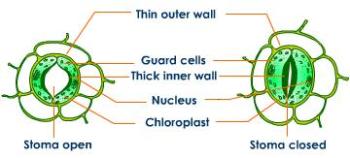Water cycle: the simplest topic in IGCSE Biology and now removed from the specification
I am wary of writing a post about the water cycle as I so rarely teach it. It seems too much like common sense to me to require any elaboration in class, but perhaps writing this post will sooth my guilty conscience for Y10 and Y11 students?
The processes that happen in the water cycle are almost all nothing to do with Biology. Water evaporates from lakes, streams and the sea. Evaporation is when thermal energy from the sun changes water from a liquid to the vapour state. The warmer the day, the more evaporation will occur. The biological component here is that water evaporates from the above ground parts of a plant. This process is called transpiration and mostly happens through the stomata (tiny pores in the lower epidermis of the leaves). Geographers like to combine “transpiration” with the “evaporation” of water direct from the soil to come up with the exciting term “evapotranspiration”. Water vapour condenses in the atmosphere to form clouds and then water falls as a liquid as rain/snow/hail which can be combined together as precipitation.
That’s the water cycle for you: couldn’t be much simpler really, could it?
Just to finish, check your A* understanding of transpiration by answering these questions – if you are feeling really digital, why not add the answers as a comment at the foot of this post?
1) When are stomata open in the leaf and when do they close?
2) What four environmental factors can speed up rates of transpiration?
3) What is the name of the experimental set up that can be used to measure transpiration rates? (Does it actually measure transpiration rate or does it really measure something else entirely?)
4) In what ways would you think of transpiration as a “necessary evil”?


